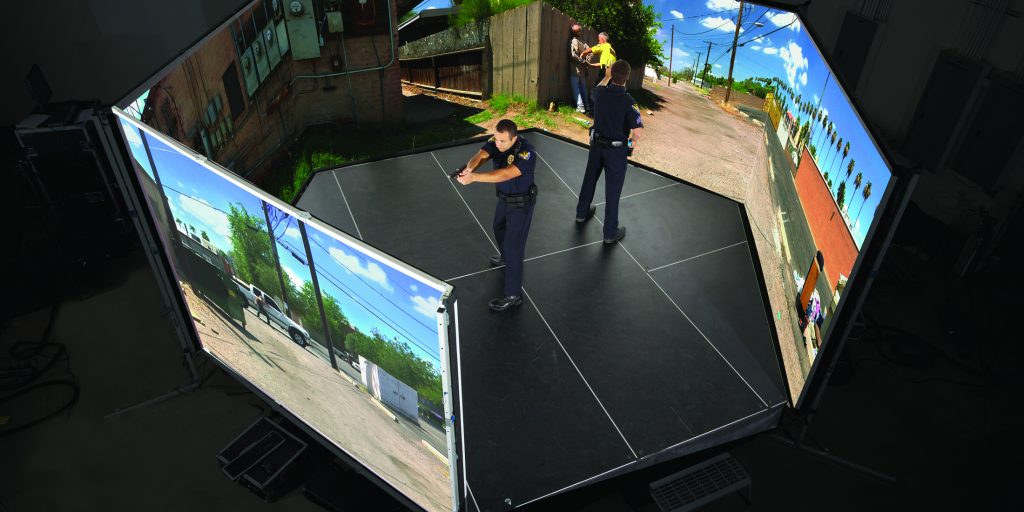De-Escalation Techniques
De-escalation Techniques.
Crisis Management is the first thing to anyone seeking to understand the different techniques for de-escalation should know. Understanding this on its own can sufficiently spell out everything one needs to know about the main topic which is de-escalation techniques. It is therefore of utmost importance that we understand what crisis is. A definition of this will give us an edge into the issues we have to resolve and deliberate upon. It is important to understand that crisis by its nature represents something that is in the negative sense. In its negative sense it presents itself as a circumstance or a set of circumstances which acts as disruption of an person’s normal and organized state where predisposed systems or regular method of normal issue resolution does not work. First thing to note is that for something to be a crisis, it must be something that completely takes an individual out of his regular schedule. The regular schedule is put on hold and this unplanned schedule takes over. Now this schedule presents itself as the opposite of the stability and predictability or at least a level of predictability associated with the regular schedule the individual is used to. This paints a picture of uncertain terrain. The ground is uncertain, the circumstance is volatile needing proper management. The next thing the person should do is to devise way to approach the situation. This involves first understanding the timely approach to give to the situation and how best we can handle the situation for it. The right mindset therefore should enable us have the right answer. The following are very important to note if the right mindset will be achieved. This is something that is not planned for so the person should be prepared to think on his feet. There is very little time to either handle this crisis positively or otherwise. HE ought to therefore bear this in mind during interaction. Now this crisis being caused by another individual should be handled with even much care. It important that the person at this seat of this crisis is viewed not as a psycho but as a person that can be reasoned with. Reasoning and dialogue is the most effective way to start a crisis resolution and management. If the individual is seen as unruly if the resolver fails to see this situation as a set of questions that can be answered, if he should see the other party as a threat with speedily ought to be neutralized how then can approach the situation with the dialogue that will bring about a clean resolution. A person management crisis ought to first see the situation as one arising out of sheer misunderstanding. This mindset will in turn set the tune for a series of negotiation strategies in order to handle the situation. Now these strategies should be active and very directive. Precision and decision is what is needed and should be timorously applied should there be any hope of resolution. It is important to note that crisis is something that has the ability to escalate. It can grow worse, it can become worse than it already is, hence the need to act quickly first to stop its growth. The first step is not to totally eliminate it but to first restrict it momentum. Then after this step measures should be taken in exploring the best ways to handle this situation. It is also important that the person handling this crises is definite about the things he wishes to achieve. Restricting his mind to these things needed to be achieve will give the person a head-start. First by eliminating distractions the person is focused on the things that ought be achieved and what should be ignored. The aim of crisis management is not to burn everything down and be the king of the ashes. The goal is to make sure that there is resolution. Resolution is the situation where there are very less damage and that should be the aim of anyone trying to manage crisis. Providing a helping hand. Now is the time to show empathy not just with words but with actions. The crisis manager should by very overt action show the individual at the seat of this crisis that he is ready to do all that is necessary and within his power to ensure that the points of his concerns are adequately attended to. Now the focus ought to remain on how the solve the problem and nothing more. Extraneous issues should be avoided the aim is to narrow down the points of concern. This is also the right time for the for the manager of this crisis to work on his self confidence. Without doing this none of his next steps will breed fruits, positive fruits.
Many people usually at the seat of the crisis. People that are source of the crisis are most times quite troubled mentally. These are people that may not be able to fully cope with life stressors. A change in these life stressors causes a complete break down for them and this is what leads to some of the crisis situations. Most times its not about life stressors. Some of these mentally challenged people fail to stick to their medication. This could have carried on for a while, before anyone will know what exactly happened, it will be in the presence of a major crisis situation. A person dealing with these crisis situation should therefore take care to be sure if he is dealing with one of these mentally impaired one. It is most times very easy to identify these set cause they show very obvious symptoms. If the manager of this crisis notices these unique symptoms it will guide on the next line of actions which is to either look for a professional if he is not up to the task of device means based on the peculiarity of the situation to handle the crisis. They could show sign of split personality anxiety or a high level of depression among many other symptoms.
De-escalation
it has been repeated over the years so much that it definitely makes adequate sense in all its form that two wrong can never make a right. It is quite difficult in a heated argument of two mad men if a sane person fails to stand between them that argument will reach a peaceful resolution. A person seeking to curb a crisis has one thing in mind to eliminate the crisis. These can be done in two ways first by trying to stop the growth of the conflict situation. Then the next step is to work his way down to completely eliminate the crisis. Whoever wishes to do this needs to be in charge of the situation. The brilliant question now is how do one take control of a situation that is out of control. This is what crisis is. A situation that is out of control. How do you take control of an out of control situation. The principle of de-escalation states that the best way to take control is to give up control. Let the crisis situation breath. Do not jump in the suppress its breath. Through its breathing you can easily guide its way towards a resolution. The manager should therefore be the water in the presence of the fire. This he does by assuming a weaker role. He needs to be Less confrontational, less controlling and less authoritative. The fire is fierce but the gentle water still quenches it because by assuming the weaker role certain salient powers are activated. These things that are activated are weapons you need to properly manage the crisis. Let go of control is one way of making the other party who is the source of the crisis let his guard down. A man is screaming in a bank hall dissatisfied about the service he received. At this point the attention of other customers is drawn to him. He is demanding to speak with the person in charge. Among the people watching the event are potential customers wanted to open an account with the bank, respected business men trying to access funds or run other banking transaction. One could say that the best options is to call the security to throw him out of the premises. That should happen not only will it discourage those who came to join the bank, it could also lead to a civil suit on the bank that will cost millions. The bank might be forced out of business, all because of poor management of crisis. This situation would have turned out better if an attendant walked up to this man, in a clam and reduced voice inquired about the problem, showed empathy to his situation and reassured him that it is nothing that can be resolved. Being calm and reassuring the person who is the source of this crisis is one sure way to elicit the facts or reasons for his agitation. It could something that is easily resolvable. This will help the person managing this crisis facilitate means to completely resolve the situation. First the calmness works the stop the growth of the fire while facilitation works to completely eliminate the fire.
By Doug Ruhl, VP of Business Development
Strategic Security Corp.
Tags: #protest, #emergencyresponse, #contract, #emergency, #guards, #services




